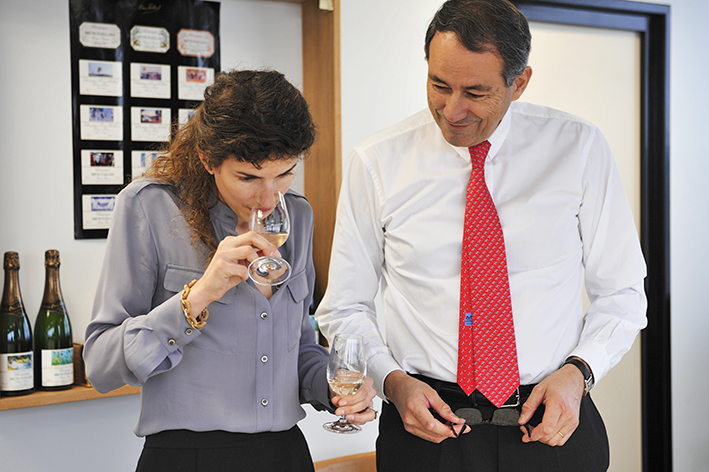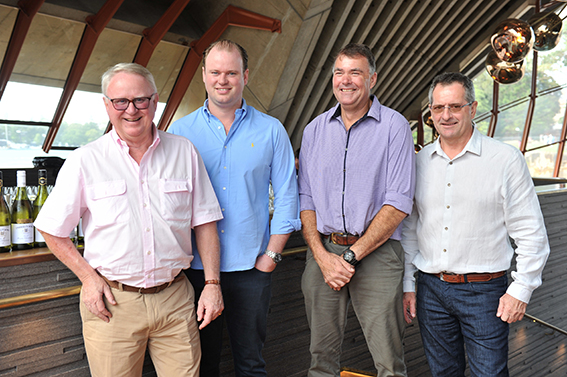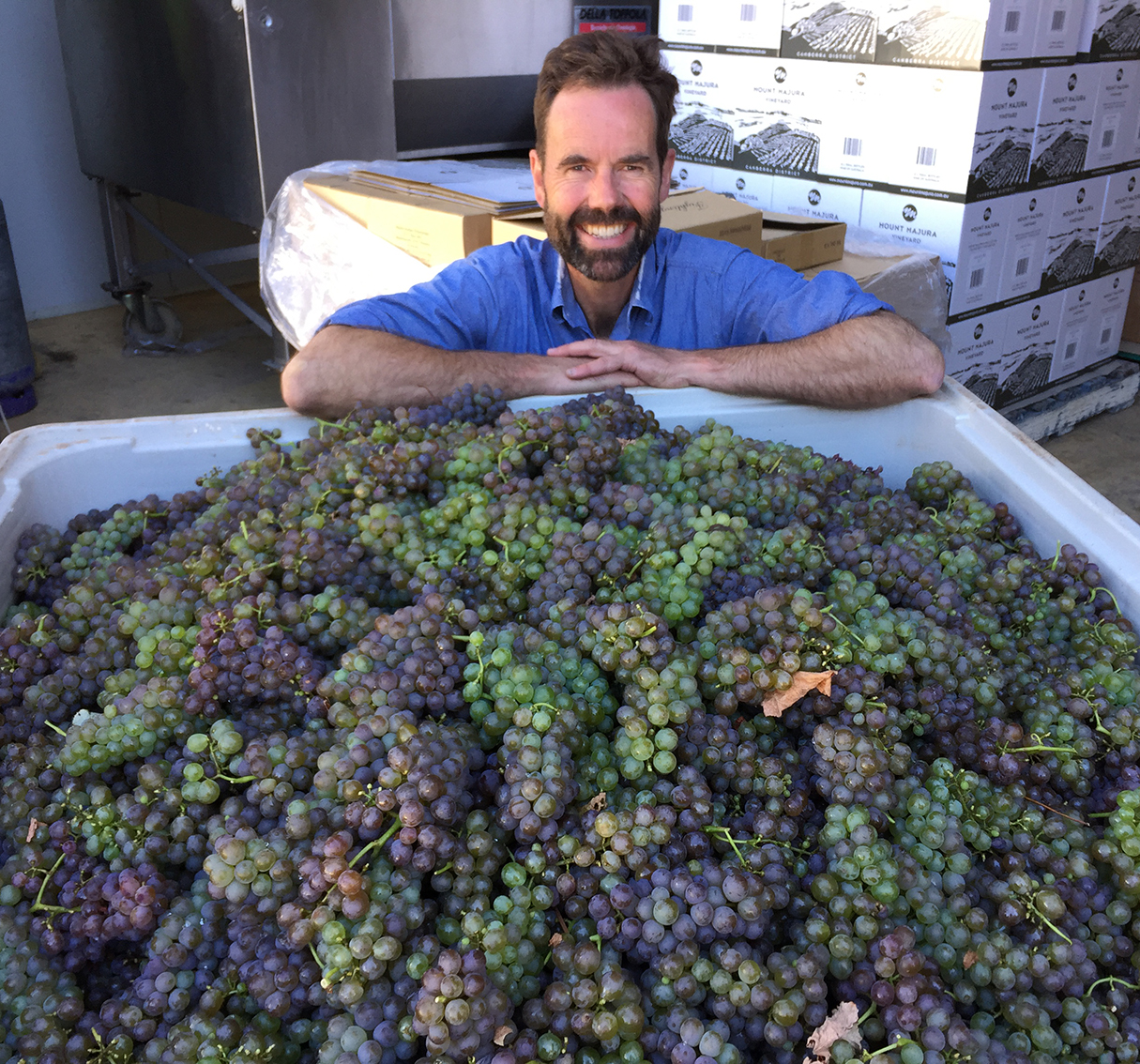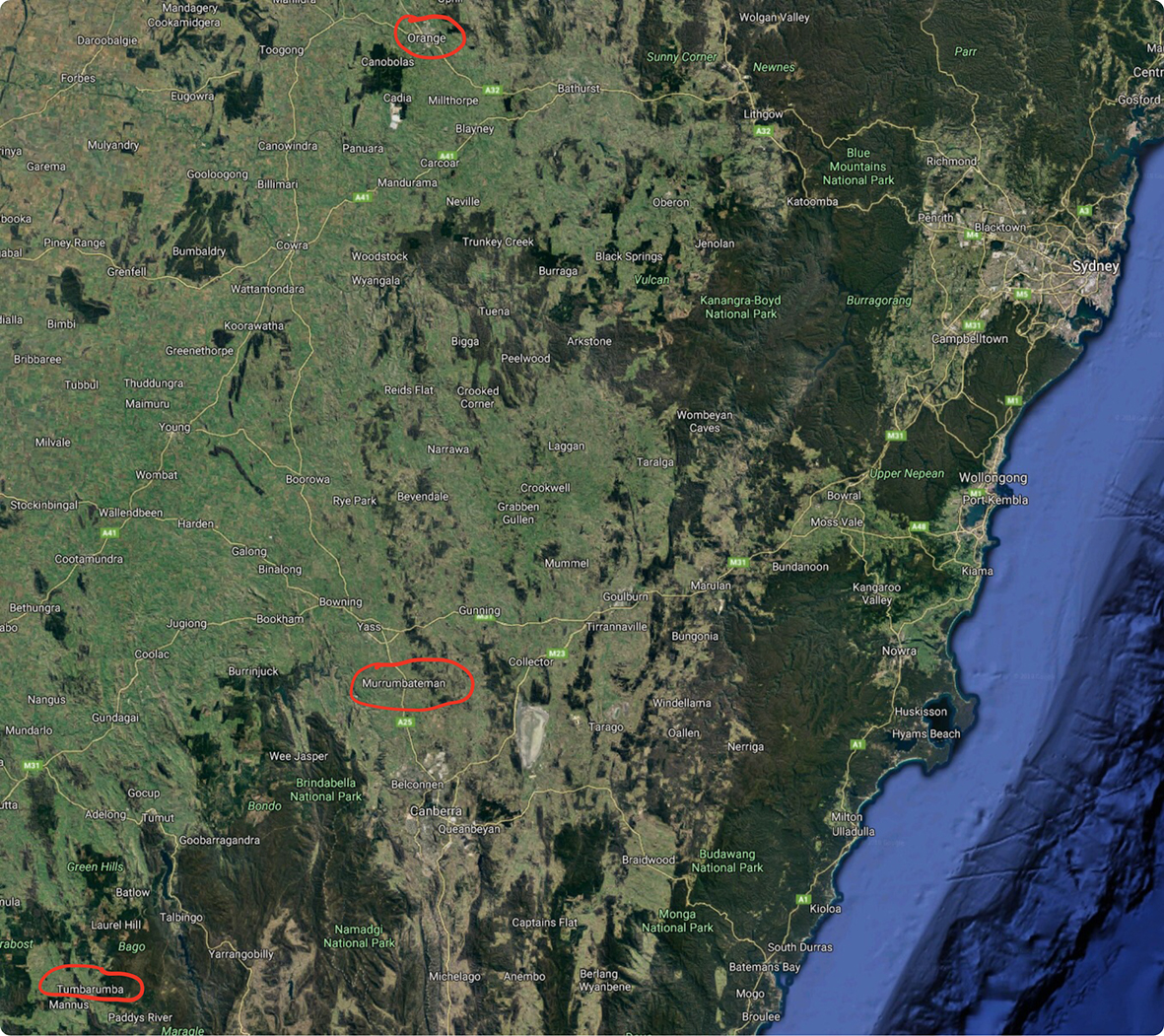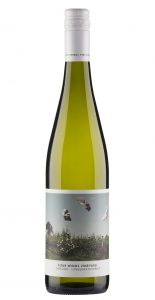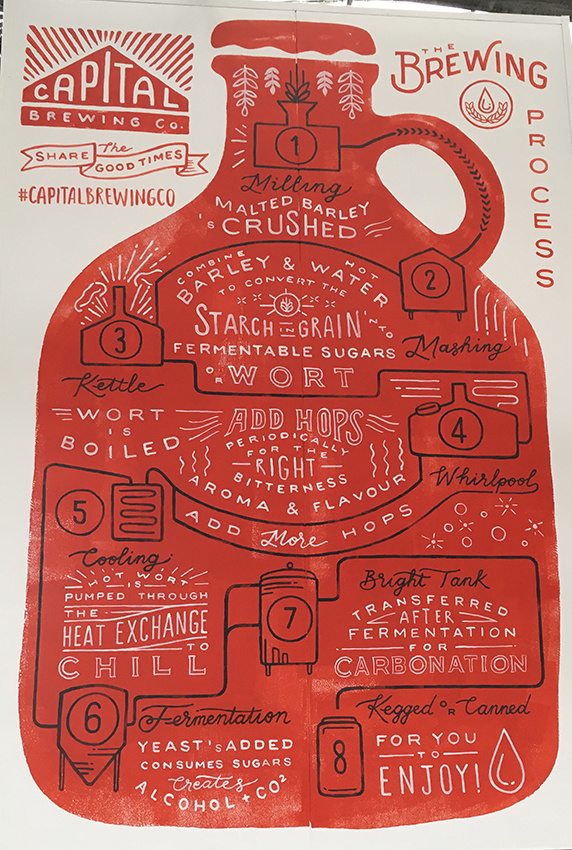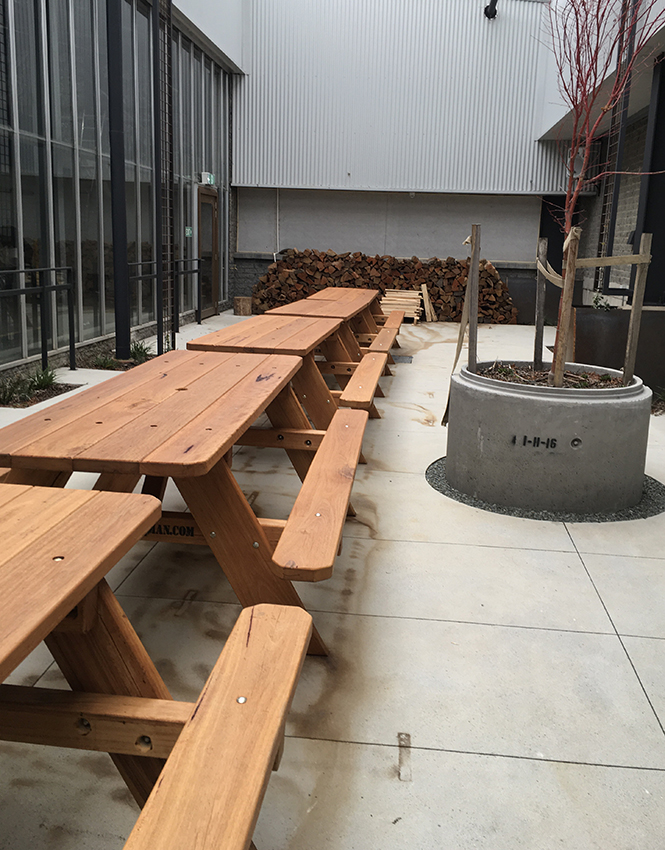In 2017, Lonely Planet rated Canberra third best city in the world. But in keeping with a decidedly riesling mood enveloping the Capital’s winemakers, Gallagher Canberra Riesling 2017 topped 519 wines from seven countries in the Canberra International Riesling Challenge.
Murrumbateman winemaker Ken Helm founded the challenge 17 years ago. At the time, Canberra riesling, though very good, lived in the shadow of Canberra shiraz, which had attracted the attention of world critics by the perfumed beauty of Clonakilla’s shiraz–viognier blend.
Helm’s dogged pursuit of riesling as the region’s white specialty gathered momentum. The challenge became a practical workshop for local riesling growers and makers. Their expertise, applied to a variety well suited to Canberra’s climate, produced rieslings that increasingly stood comparison to the best in Australia – indeed to the world, as Gallagher demonstrated this year.
Show judges loved the style. And the love spread to wine waiters and consumers in Canberra, Sydney and Melbourne. Although the absolute volumes remain small on a national scale, Canberra riesling is achieving demand matched by few producers of the variety in other regions, Tasmania excepted.
Long before Canberra’s 2017 vintage commenced, winemakers scrambled for riesling grapes. With supply no longer meeting demand, grape prices shot up. During vintage winemaker David O’Leary called riesling the district’s hot variety. “Everyone’s after it”, he said, “including out-of-district makers. And if you can find it, expect to pay $2000 a ton”. Only Tasmanian riesling fetched more, at around $2300 a ton, he added.
O’Leary sees no let up for the coming vintage even though early signs point to another bountiful harvest in 2018. He says, “A lot of people are chasing it, but finally the [grape] price reflects how much the wine can sell for”. He expects the price to remain around $1800–$2000 a ton in 2018.
Like others in the district, O’Leary is either planting more riesling or grafting it onto less popular varieties, setting the scene for increased supply over the next few years.
If riesling attracted perhaps the most attention locally this year, our winemakers made beautiful and sometimes quirky wines across a wide range of styles.
Shiraz remains the district red specialty, though some makers say the sheer number of labels on offer now makes it harder to find restaurant listings or retail shelf space.
Partly for that reason, Nick Spencer, recently departed from Eden Road Wines, plans on offering reds from warmer Gundagai under his new Nick Spencer label. He reckons using appropriate varieties (shiraz, cabernet sauvignon, touriga and grenache) in warm-climate blends makes a good narrative and an alternative style for drinkers.
But for most, shiraz remains the main game in a wide and deep district offering. My gong for Australian shiraz of the year goes to Clonakilla Syrah 2015, a remarkable small-production wine from the warmest site on the Clonakilla vineyard. The wine never wins medals or trophies for one reason – winemaker Tim Kirk doesn’t enter it in wine shows.
However, Frank van der Loo shows his shiraz, and in November his Mount Majura 2015 won the Chairman’s Award at the National Wine Show of Australia. Former Canberran Jim Chatto wrote, “I generally look for a wine of excellent quality and character. My Chairman’s Award goes to a beautifully expressive cool climate shiraz from Canberra. Amazingly this very same wine was the runner-up to my award last year”.
Canberra shiraz fared well at the NSW Wine Awards, too, where Lerida Estate won the best young shiraz trophy. At the same show, Shaw Vineyard Estate Cabernet Shiraz 2015 topped the best young red blend category.
Canberra’s production of so-called alternative varieties continued to expand in 2017. Our makers now work with, among others, graciano, tempranillo, sangiovese, gamay, nebbiolo, colorino, mammolo, refosco, mondeuse, canaiolo, aglianico, nero d’avola and cinsault.
Of these, sangiovese and tempranillo became mainstream some years ago, with conspicuous success for Mount Majura’s tempranillo, now its signature variety, and its gold-medal winning mondeuse and TSG (tempranillo-shiraz-graciano blend).
In 2017, Pankhurst Wines, Hall, produced its first whites from marsanne (Rhone Valley origin) and arneis (Piedmont origin), varieties Allan Pankhurst grafted onto semillon and sauvignon blanc rootstock a few years earlier.
The wines, made for Pankhurst by Capital Wine’s Andrew McEwin, give us a new expression of marsanne, no newcomer to Canberra, and I believe our first glimpse of Canberra-grown arneis. The marsanne 2017 ($25) provides full, fresh flavour with the distinctive viscosity of the variety. Arneis 2017 ($30) shows a racy, pleasantly tart character and bone-dry finish.
In 2017, awards of another kind came to Four Winds Vineyard.
In March the vineyard’s new label became “supreme champion” of London’s Drinks International Wine Design Challenge. Five months later, and still in London, the labels were awarded “best redesign” and “supreme champion” at Harpers Design Awards.
In May, Wine Australia selected Four Winds’ Sarah Collingwood for its Future Leaders Program. Then in September Collingwood won Owner-Operator of the Year in the Australian Women in Wine Awards.
2017 also witnessed generational change at three wineries: founders Jim Lumbers and Anne Caine sold Lerida Estate, Lake George, to Michael McRoberts. Roger and Faye Harris sold Brindabella Hill, Hall, to Michael Anderson and Renae Kilmister. And Brian and Janet Johnston sold McKellar Ridge to John and Marina Sekoranja.
Lerida’s operations manage Andrew McFadzean, says new owner Michael McRoberts’ long-term plans include doubling the winery, barrel cellar and cellar door capacity as production lifts from 130 tons in 2017 to 300 tons.
McFadzean expects to source grapes from neighbouring regions, including Hilltops and Orange, as well as Canberra.
“We want not just more wine, but excellence in everything we do. We want to give customers a great experience in wine, at the cellar door, in restaurants and when they drink our wines at home”.
Lerida now offers cellar door sales and food service seven days a week.
Brindabella Hills’ vineyards had been out of action for a couple of years. But new owners Michael Anderson and Renae Kilmister retained chef Robyn Cooper and winemaker Brian Sinclair.
The couple then “worked around the clock for weeks”, says Anderson, revamping the vineyard and renovating the cellar door and café. They have further plans to add a big new deck to the café, with views to the Murrumbidgee Valley and also to renovate and move into the Harris’s former house.
At about the time John Sekoranja decided to leave corporate life and buy a winery or vineyard, he met McKellar Ridge founders Brian and Janet Johnston. Instant rapport led to a sales agreement.
McKellar Ridge changed hands in June 2017. But before that Sekoranja and wife Marina had worked vintage with Brian Johnston and both had enrolled in the wine science degree at Charles Sturt University.
They plan to modernise the cellar door, continue with the wine styles the Johnstons established and “expand and diversify the range”. They’ll experiment a bit with an existing tempranillo style and add a sparkling riesling to the range.
The Sekoranjas also plan to add sangiovese to a new one-hectare shiraz and riesling vineyard they planted at their home in Wallaroo Road, Hall.
And at Eden Road Wines, Murrumbateman, winemaker Nick Spencer left to create his own brand. His departure opened the door to another exceptionally talented winemaker, Celine Rousseau. Rousseau made many beautiful Hilltops and Tumbarumba region wines at Chalkers Crossing, Young. She now manages Eden Road and heads the winemaking team.
Change is also underway at Jeir Creek Winery, Murrumbateman. Founders Rob and Kay Howell put the winery and vineyard on the market recently and hope to find a buyer in the near future.
Meanwhile, Rob Howell remains on the vineyard and says, “Beautifully timed rain boosted the vines and inflorescences [that precede flowering, then fruit set] suggest it’ll be a big crop [in 2018]”.
Howell’s Murrumbateman neighbour, Ken Helm, felt apprehensive during his driest July–August on record. He said, “I’d just planted a new riesling vineyard, but glorious rain arrived just in time. Now I look in the riesling vineyards and I’ve never seen inflorescences like this. Every shoot has two bunches, some have three. It could be an enormous crop”.
As 2017 draws to a close and we enjoy this year’s Canberra whites and last year’s reds, vignerons remain hopeful of another decent crop in 2018 – giving Canberra a rare run of three consecutive decent vintages. But there’s a lot of weather to come before vintage, so let’s celebrate what we have now and hope for the best in 2018.
Copyright © Chris Shanahan 2017
First published 8 December 2017 in the Canberra Times and canberratimes.com.au

 Clonakilla Canberra District Syrah 2016 $120
Clonakilla Canberra District Syrah 2016 $120 Clonakilla Tumbarumba Chardonnay 2017 $40
Clonakilla Tumbarumba Chardonnay 2017 $40 Clonakilla Canberra District Viognier 2017 $50
Clonakilla Canberra District Viognier 2017 $50 Clonakilla Canberra District Ceoltoiri 2017 $40
Clonakilla Canberra District Ceoltoiri 2017 $40 Clonakilla Canberra District Pinot Noir 2017 $50
Clonakilla Canberra District Pinot Noir 2017 $50

